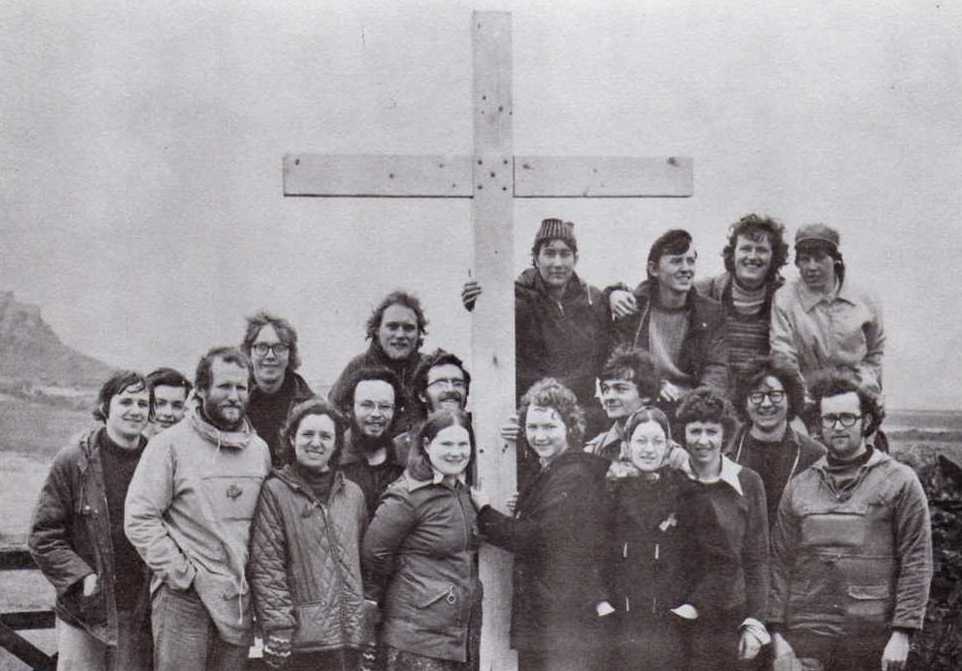The background to Northern Cross and how we started
Every year for more than 40 years, during the week leading up to Easter, groups of pilgrims have been walking together from various places in the North of England and Scotland for between 70 and 120 miles to Holy Island on the Northumbrian coast of England carrying a large heavy cross.
So why did this start?
It began in 1975 when a number of pilgrims got together at the end of a Student Cross pilgrimage to Walsingham. As they had walked Student Cross a few times they wanted to walk somewhere different for Easter.
The key elements were maintained, to build up a small Christian community as the group walked along the road carrying crosses; a preparation for Easter; a retreat; a witness to people we passed; prayer, silence, love and happiness. However in the beginning it was also decided that there would be two rules.
1.This is an Ecumenical Pilgrimage
2.There is no other rule.
A number of destinations were suggested; but it was settled for Holy Island as a place to walk to, as it embodied Celtic Christianity and somewhere where English and Scottish groups could meet, close to the border. The original Pilgrims causeway to Holy Island naturally led to the decision to use this as the final stage of the journey to Holy Island – across the sands.
Maps were pulled out, and it seemed that Penrith would provide a reasonable starting place, seven good walking days away. Northern Cross was born. Newcastle leg was added in subsequent years and 1978 saw a leg begin from Edinburgh. The final main leg, Lanark leg, was founded about 1980. Like Student Cross, similar size crosses were made, that could be carried by 3 people, laid flat.
Around 1990 time had moved on, and some of the original routes were no longer viable due to the increasing danger from vehicle traffic. The decision was made to move much more to footpaths, and this necessitated lighter crosses that could be carried on their side by two people. Some halls had closed down over the years, forcing changes of route. So the present Carlisle route was born like a phoenix from the ashes of Penrith, and the Newcastle route moved outward to Hexham, which later was adjusted to start at Bellingham, with the leg (initially renamed Northumbrian) taking the Bellingham name too. Melrose (originally St Cuthbert’s) and Dunbar (previously Haddington) legs were created in more recent years to provide walking routes for different profiles.
Following the 40th pilgrimage walk in 2015, the Northern Cross Walking Pilgrimage celebrated its official 40th anniversary in 2016 as over 60 pilgrims enjoyed the 41st walking pilgrimage run by Northern Cross. Many different people from all walks of life have enjoyed participating in Northern Cross over the years; some for one year alone, some for several, and others returning year on year.
 larger.png)
